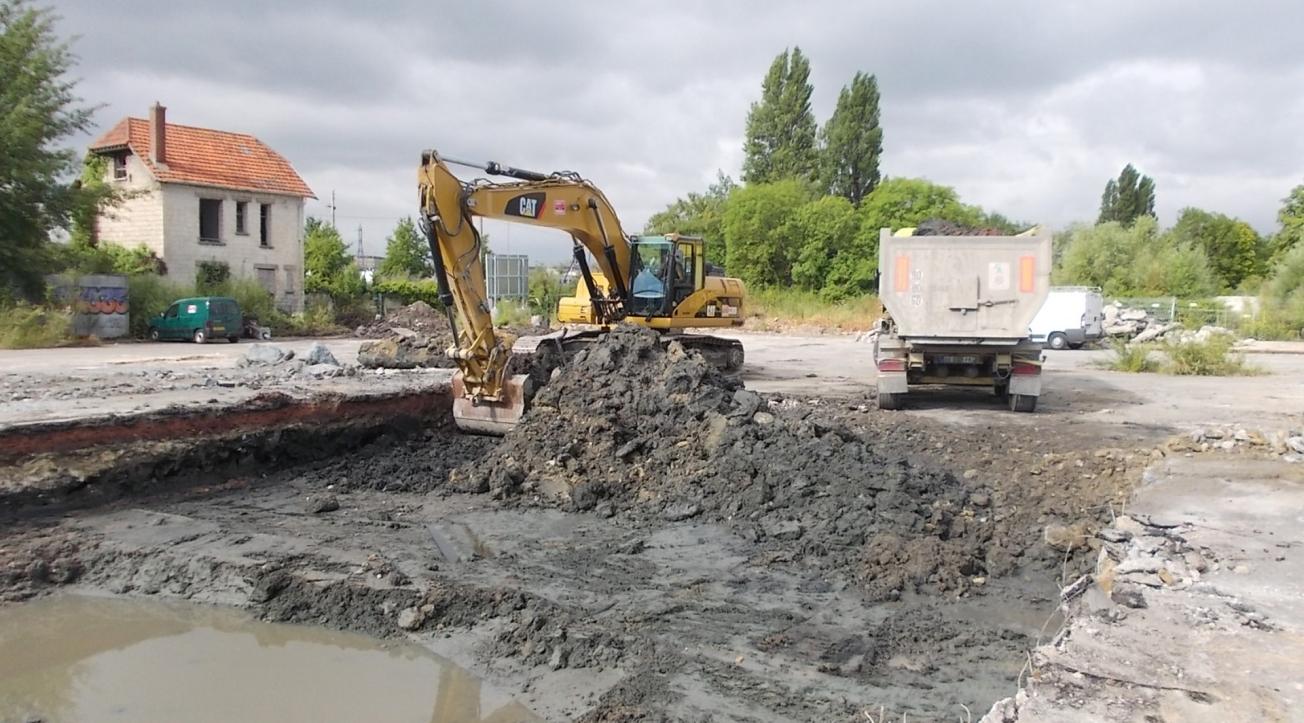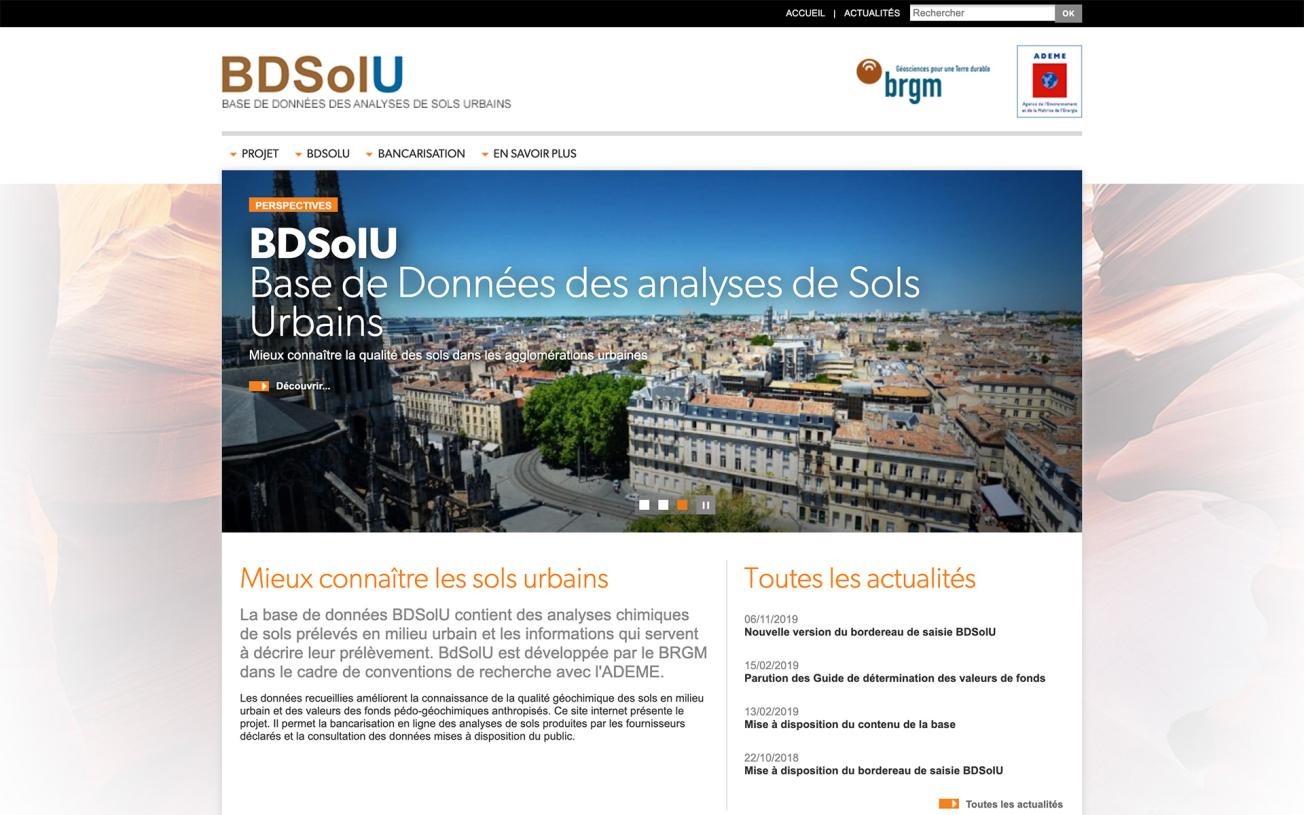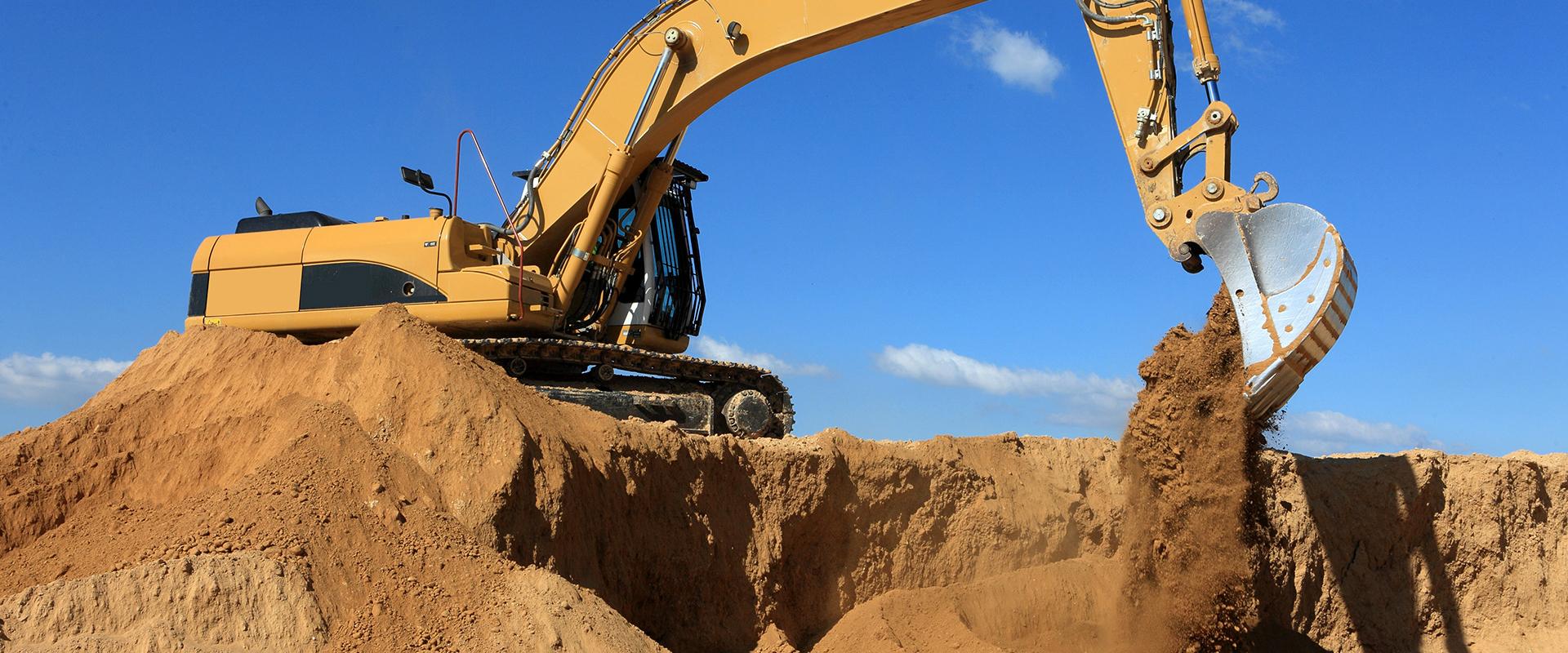
Rehabilitation work on a brownfield site for conversion to residential use (off-site reuse of excavated earth) (2013).
© BRGM - Fabien Lion
On 30 December 2020, BRGM became a member of Gis Sol (the French Scientific Interest Group for Soils).
Gis Sol designs, orients and coordinates the geographical inventory of soils in France, and the way soil properties and changes in soil quality are monitored. It manages the soil information system and responds to requests and inquiries from public authorities or civil society concerning the state of the soil at local and national level. Gis Sol brings together the French Ministries in charge of Agriculture and Environment, INRAE, ADEME, IRD, IGN and OFB.
Soil quality in (potentially) polluted sites and soils
BRGM is involved in Gis Sol as part of a programme entitled "Soil quality in (potentially) polluted sites and soils".
The primary objective of BRGM's involvement is to ensure the interoperability of data between the BDSolU (ADEME-BRGM) database on urban soils and DoneSol (with INRAE representing Gis Sol), which groups together data from the RMQS (French Soil Quality Measurement Network), the BDETM (French Database for Metal Trace Elements) and the BDAT (French Database for Earth Analyses), so that they can be consulted and made available through a common Gis Sol platform.
Enabling the cross-referencing of data from the BDSolU and DoneSol databases will make it possible to establish an exhaustive range of information concerning soils in France, from urban soils to agricultural and forest soils, by making available pedological, biogeochemical and land-use data available at the same time.

Home page of the BDSolU website
© BRGM
Interoperable web services
All the available data – both raw and processed – will be accessible through interoperable web services, acting like basic building blocks to ensure the data can be quickly and easily disseminated and exploited. To achieve this, the work carried out over many years by BRGM and INRAE within the INSPIRE, OGC and (more recently) W3C consortia will be used as a foundation to develop an effective and coherent dissemination network.







